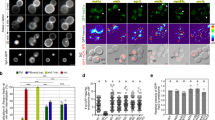Abstract.
Secretion is a fundamental biological activity of all eukaryotic cells by which they release certain substances in the extracellular space. It is considered a specialized mode of membrane trafficking that is achieved by docking and fusion of secretory vesicles to the plasma membrane (i.e., exocytosis). Secretory vesicle traffic is thought to be regulated by a family of Rab small GTPases, which are regulators of membrane traffic that are common to all eukaryotic cells. Classically, mammalian Rab3 subfamily members were thought to be critical regulators of secretory vesicle exocytosis in neurons and endocrine cells, but recent genetic and proteomic studies indicate that Rab3 is not the sole Rab isoform that regulates secretory vesicle traffic. Rather, additional Rab isoforms, especially Rab27 subfamily members, are required for this process. In this article I review the current literature on the function of Rab isoforms and their effectors in regulated secretory vesicle traffic. (Part of a Multi-author Review)
Similar content being viewed by others
Author information
Authors and Affiliations
Corresponding author
Rights and permissions
About this article
Cite this article
Fukuda, M. Membrane traffic in the secretory pathway. Cell. Mol. Life Sci. 65, 2801–2813 (2008). https://doi.org/10.1007/s00018-008-8351-4
Published:
Issue Date:
DOI: https://doi.org/10.1007/s00018-008-8351-4




